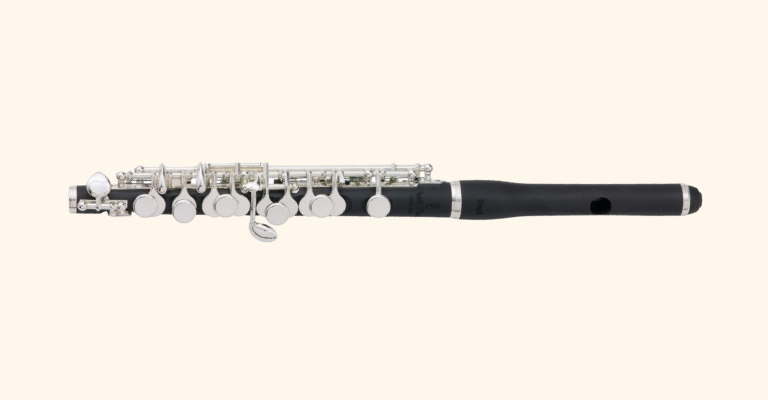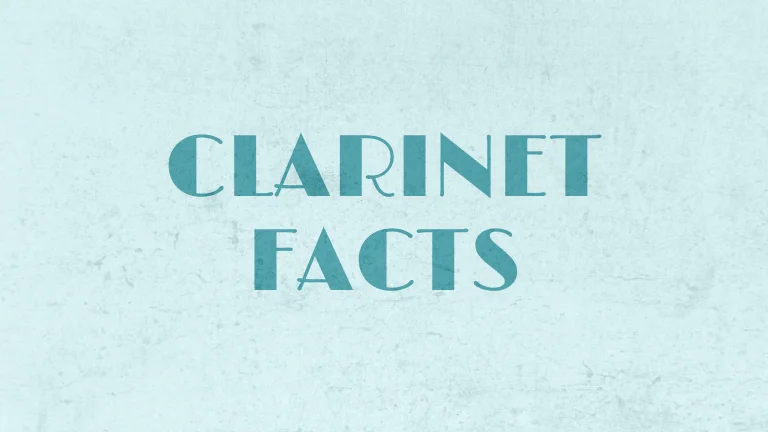Flutes are enchanting woodwind musical instruments that offer ethereal, melodious, and somewhat melancholy sounds.
Each type of flute produces a unique sound and has different characteristics. Knowing how each type differs will help you to better understand the instrument.
But first, you can see some of the important details about flutes in this table.
| Type | Key | Range | Sound | Common Usage |
|---|---|---|---|---|
| Alto Flute | G or F | Lower than C | Mellow | Chamber music |
| Piccolo Flute | Db or C | Higher than C | Bright | Marching bands, orchestras |
| Bass Flute | C | Lower than C | Deep | Experimental music, contemporary |
| Concert Flute | C | C to C# | Clear | Classical, orchestras |
| Soprano Flute | C | Higher than C | Sweet | Historical ensembles, folk music |
What Are The Different Types Of Flutes?
So, let’s dive in and find useful and important information about the popular types of flutes that will be useful to you.
1. Alto Flute

Alto flutes are bigger and longer than concert flutes and they are pitched in G or F. This type makes soft and emotional sounds, which is why it is loved in chamber music.
The alto flute’s lower notes can create beautiful and meaningful melodies that give compositions more depth and personality. It also sounds great when played alone, and its warm tone can enchant listeners.
Musicians you may have heard that play on alto flutes are Jean Pierre Rampal and Leone Buyse among others.
2. Piccolo Flute

Piccolo flutes, pitched in Db or C, are the smallest and highest-pitched types of flutes. Their bright and piercing sound is ideal for cutting through the noise of marching bands and orchestras.
Piccolo solos in orchestral works are memorable, showcasing the instrument’s brilliant and agile capabilities. I love the piccolo flute but not every flute brand makes them right.
Piccolo flute players include Sir James Galway and Jean Louis Beaumadier.
3. Bass Flute

Bass flutes that are tuned to the key of C, are a notable and uncommon addition to the flute family. Their resonant timbre is great for modern compositions and experimental music.
This distinctive sound of bass flutes makes them a perfect instrument for avant-garde composers. Also, if you like low-range sounding woodwind instruments, then the bass flute is perfect.
Perhaps the most popular bass flute player is Robert Dick who is known for interesting techniques.
4. Concert Flute

Concert flutes, also known as the C flutes, are the standard flutes found in classical music, orchestras, and solo performances. Its clear and versatile sound, spanning from C to C♯, makes it a cornerstone of the Western classical tradition.
In general, it’s the most popular type in the flute family. They have a wide range and expressive capabilities and are used in different modern or old compositions.
Some of the most famous concert flute players are Emmanuel Pahud and Sir James Galway, who also plays piccolo flutes.
5. Soprano Flute

Soprano flutes are a C-pitched instrument with a higher range than the regular concert flute. They have a sweet and melodious tone. You can hear them in early music, historical ensembles, and folk music traditions.
These types of flutes have charming and expressive sounds. They bring up a nostalgic and authentic feel and emotions when you listen to them. Also, the cost of this flute is not too expensive, compared to the alto.
Among my favorite soprano flute players are Barthold Kuijken and Stephen Preston.
Other Flute Types
Apart from the listed flute types, there are other types with distinctive sounds, characters, and capabilities.
One example is bansuri, which is a side-blown flute from India and Nepal. It’s made from bamboo and metal-like materials and is commonly used in Nepali lok songs.
Another one is the Native American flute which has open finger holes and two chambers. One chamber collects the player’s breath, while the other creates sound and doesn’t require an embouchure.
Another type of flute is the contrabass flute which is a rare member of the family. Mostly used in flute ensembles, but also as a solo instrument or in chamber music. The range is similar to the concert flute but the pitch is two octaves lower.
Conclusion
As you can see, different types of flutes have various characteristics that are unique to them. And it’s always better to know more about the instrument you play and love. Hope this post is useful and for more info read facts about flutes.





